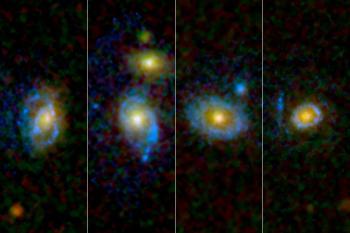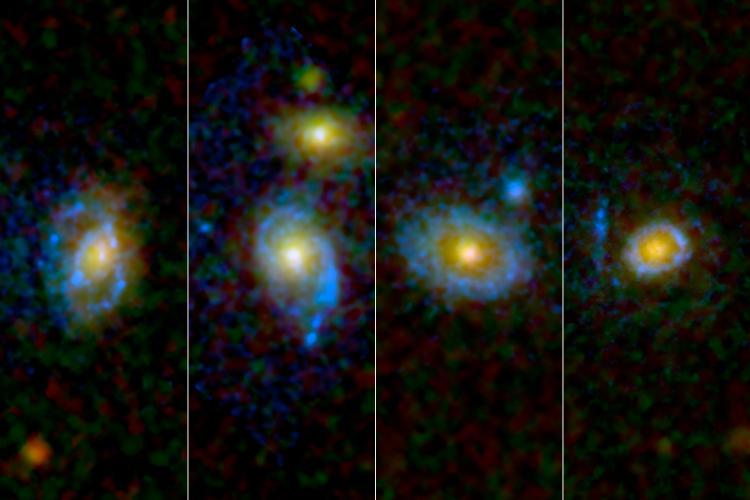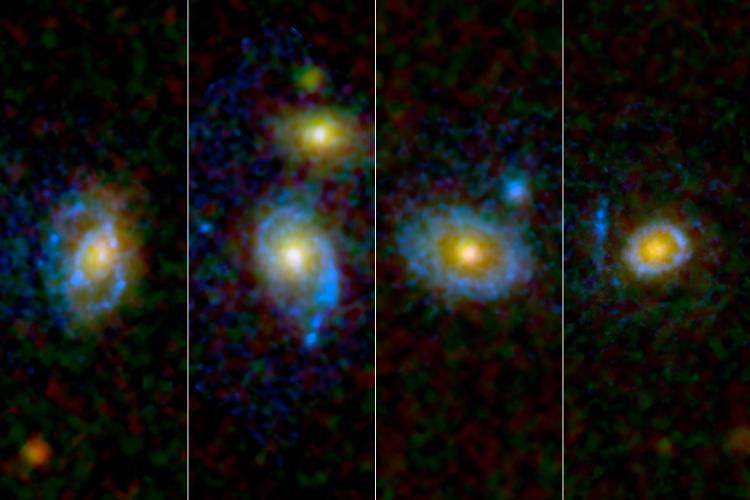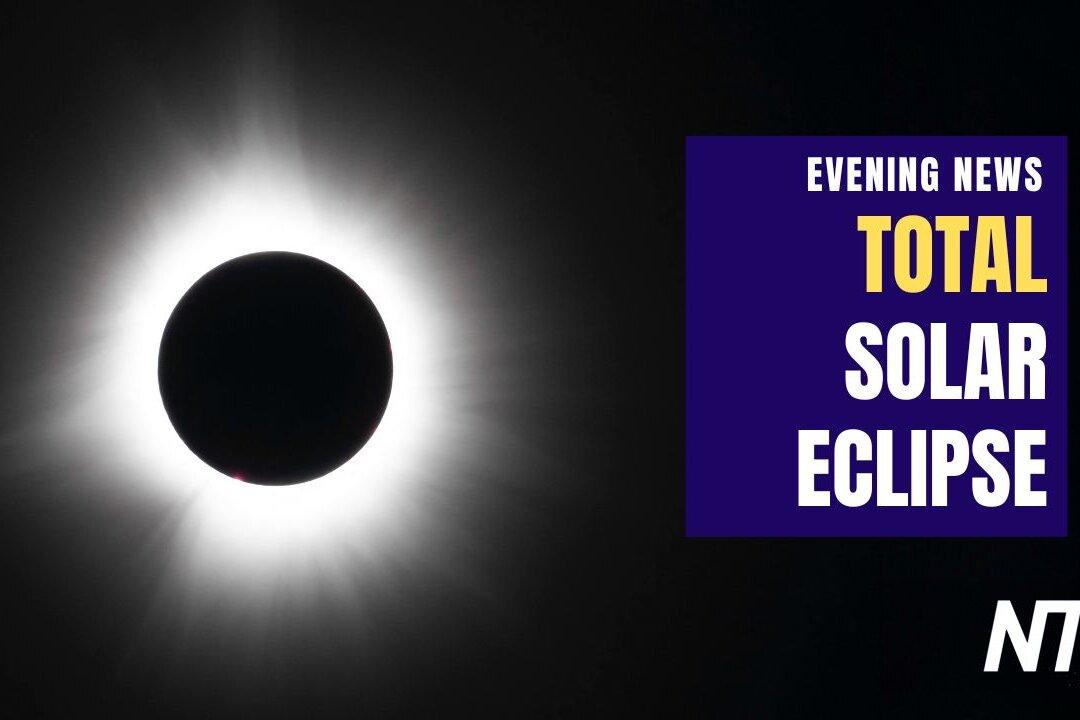Astronomers have recently discovered giant ultraviolet rings in galaxies thought to be dead, or inactive, according to a NASA press release.
Scientists are mystified as to how such bright light could be emitted by massive galaxies recognized as being astronomically dead. In NASA’s pictures of the rings, the supposedly dead galaxies are deep red, indicating these stars are around 10 billion years old.
“In a galaxy’s lifetime, it must make the transition from an active, star-forming galaxy to a quiescent galaxy that does not form stars,” said Samir Salim, lead author of a recent study and a research scientist in the department of astronomy at Indiana University, Bloomington, in a press release.
“But it is possible this process goes the other way, too, and that old galaxies can be rejuvenated.”
The UV rings were discovered through NASA’s Galaxy Evolution Explorer and Hubble Space Telescope. After careful observation through the Hubble Telescope, the NASA scientists saw three-quarters of the observed galaxies had bright rings of ultraviolet light stretching as far as 250,000 light-years.
Although there is a possibility that some of the light seen in the galaxies is the remnant of an earlier star’s formation, it is most likely new gas has reached the aged galaxies and caused the creation of the UV rings.
The UV rings are expected to lead researchers to a deeper understanding of a galaxy’s life cycle, according to the press release.
“We haven’t seen anything quite like these rings before,” said Michael Rich, co-author of the paper and a research astronomer at UCLA. “These beautiful and very unusual objects might be telling us something very important about the evolution of galaxies.”
{etRelate 41552, 41421}Researchers have yet to discover how fresh gas has infused the 10 billion year old galaxies. More observations will be conducted to understand the new phenomenon.
Scientists are mystified as to how such bright light could be emitted by massive galaxies recognized as being astronomically dead. In NASA’s pictures of the rings, the supposedly dead galaxies are deep red, indicating these stars are around 10 billion years old.
“In a galaxy’s lifetime, it must make the transition from an active, star-forming galaxy to a quiescent galaxy that does not form stars,” said Samir Salim, lead author of a recent study and a research scientist in the department of astronomy at Indiana University, Bloomington, in a press release.
“But it is possible this process goes the other way, too, and that old galaxies can be rejuvenated.”
The UV rings were discovered through NASA’s Galaxy Evolution Explorer and Hubble Space Telescope. After careful observation through the Hubble Telescope, the NASA scientists saw three-quarters of the observed galaxies had bright rings of ultraviolet light stretching as far as 250,000 light-years.
Although there is a possibility that some of the light seen in the galaxies is the remnant of an earlier star’s formation, it is most likely new gas has reached the aged galaxies and caused the creation of the UV rings.
The UV rings are expected to lead researchers to a deeper understanding of a galaxy’s life cycle, according to the press release.
“We haven’t seen anything quite like these rings before,” said Michael Rich, co-author of the paper and a research astronomer at UCLA. “These beautiful and very unusual objects might be telling us something very important about the evolution of galaxies.”
{etRelate 41552, 41421}Researchers have yet to discover how fresh gas has infused the 10 billion year old galaxies. More observations will be conducted to understand the new phenomenon.






